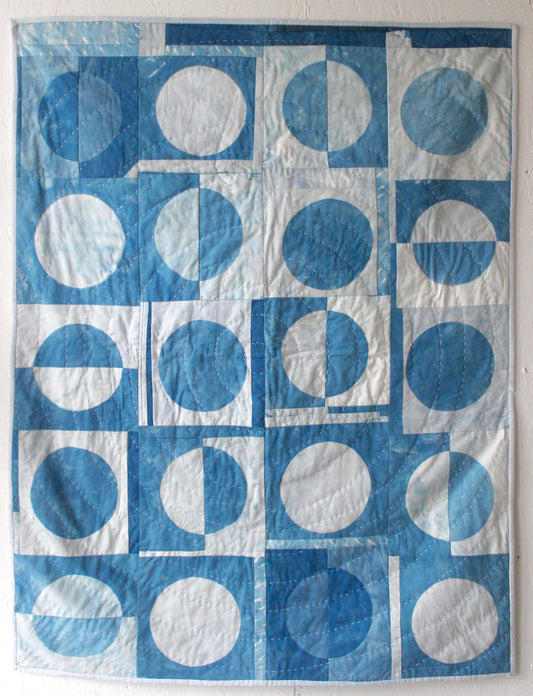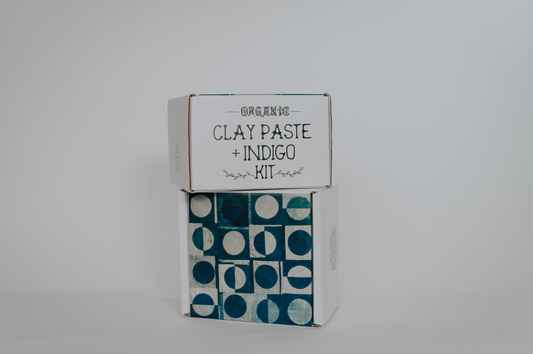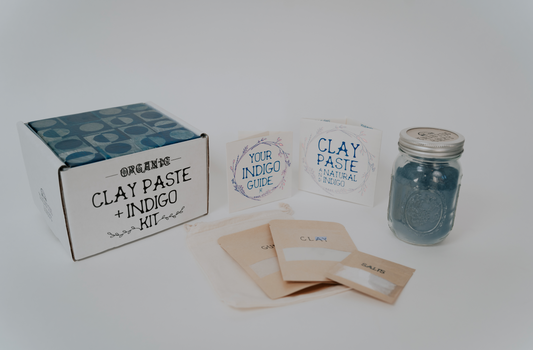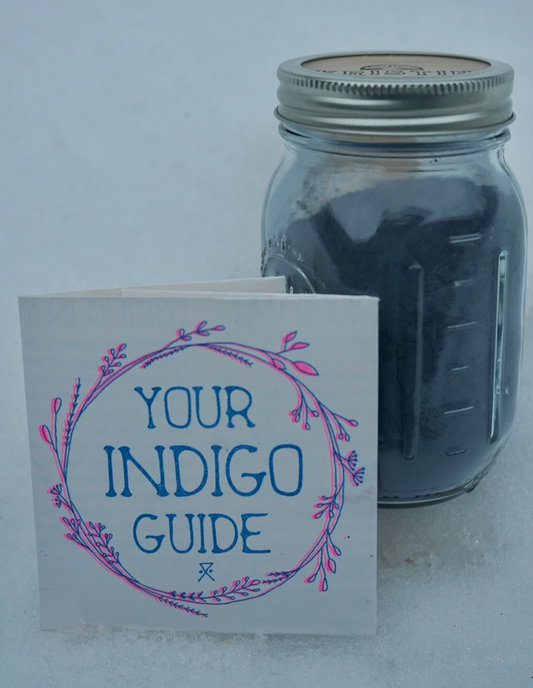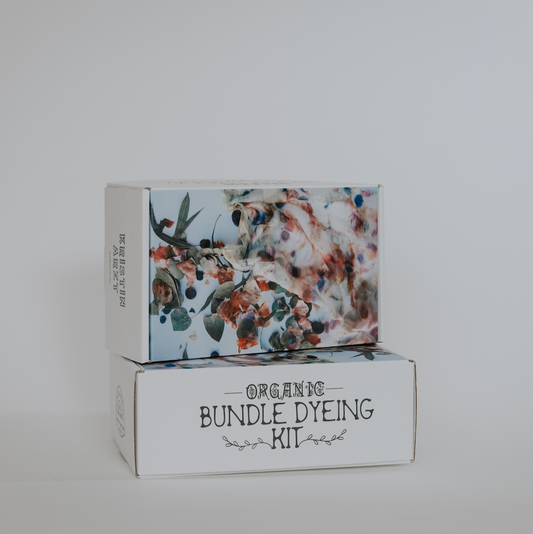Ironweed (genus Vernonia) is a gorgeous (and tall!) native perennial that brightens up meadows and roadsides in late summer. Have you ever wondered if you could dye with it? (I’m fairly certain the answer is yes.) Follow up question: Have you ever dyed with it?
I recently was on a walk with my dog Joe (his full name is Joe-Pye Weed, another beautiful native perennial), and we stopped at the eye-level blooms. I collected just a handful of flowers and experimented with some low-heat dyeing. In this post, I’ll share how to identify, forage, and use ironweed for natural dyeing.
Identifying Ironweed
Ironweed is part of the aster family and typically grows in sunny meadows, along field edges, and in open woodlands. I also have some growing in my fairly urban neighborhood. It seems to grow well just about anywhere!
It can reach 3–10 feet tall and clusters of deep purple, fuzzy-looking flowers bloom from July through September, depending on where you live. Where I live in Maryland, this is just about mid- to late-August.
For more on the plant, visit The Plant Native.

Harvesting for Dye
Always positively identify plants before harvesting, and check local regulations since ironweed plays a valuable role in supporting pollinators. For this dye test, I took no more than 10% of the blooms I saw. I collected just just enough to fill a small mason jar, maybe a handful or less.
Some tips:
- Harvest sparingly. Leave plenty of blooms for bees, butterflies, and other pollinators.
- Both the flowers and leaves can be used for dyeing. In this test, I just used the flowers. Flowers tend to give more pink and purple colors, while leaves and stems may yield more yellows due to the flavanoids present.
- How much material to use? The general rule of thumb is 100% the weight of your fiber for fresh plants.
- Harvest flowers when they are fresh and fully open for the strongest color. Ironweed flowers start to turn a little white when they are past their prime.

Steps for Dyeing with Ironweed
- Chop your plant material into smaller pieces to expose more surface area.
- Soak the plant matter in water overnight to begin extracting color.
- The flower is more heat sensitive than the leaves and stems. For my test, I did a solar extraction on a very sunny day. I covered the flowers in warm water and left them to sit in the sun for about 12 hours. I added my fabric to the liquid and let it sit for another 24 hours.
- If you prefer to use additional heat, simmer the whole plant gently (do not boil) for about an hour. This will work better for the leaves and stems than the blooms.
- Strain out the plant material before adding your fibers.
- Add your mordanted fabric for at least thirty minutes.

Mordants and pH Shifting
Ironweed can yield a range of tones depending on the mordant and pH modifiers you use:
- Alum (potassium aluminum sulfate): When I dyed with the flowers, I got lovely pinks and purples. For the stems, it will result in soft yellows, golds, and greens due to the flavonoids.
- Soda ash or baking soda: Shifts the color towards light greens. You only need a pinch!
- Vinegar: Shifts the color towards pinks.
- Iron (ferrous sulfate): Shifts the colors toward deeper purple for the flowers, or deeper olive greens for the stems and leaves.
On protein fibers like wool and silk, colors tend to be richer, while cellulose fibers like cotton and linen will produce more subdued results.

Dyeing Process
- Mordant your fabric ahead of time for best results. For guides on how to mordant: here for cellulose fibers and here for protein fibers.
- Wet out your fibers before placing them in the dye bath.
- Simmer gently with the extracted dye for thirty minutes. Stir occasionally for even coverage.
- See above for options! You can shift the pH using white vinegar (pinks) or soda ash (greens). Post mordant with iron for deeper purples and greens.
- Rinse with cool water and dry in the shade.
The shades may soften over time, especially on plant-based fibers. Keep your dyed fabric out of the direct sun and wash with a pH neutral soap when necessary.
 Above: silk mordanted with alum and dyed with ironweed at 100% the weight of the fiber. Top left: habotai mordanted with alum; Top right: habotai mordanted with alum, modified with baking soda; Bottom left: habotai mordanted with alum modified with vinegar, Bottom center: raw silk mordanted with alum post-mordanted with iron; Bottom right: exhaust.
Above: silk mordanted with alum and dyed with ironweed at 100% the weight of the fiber. Top left: habotai mordanted with alum; Top right: habotai mordanted with alum, modified with baking soda; Bottom left: habotai mordanted with alum modified with vinegar, Bottom center: raw silk mordanted with alum post-mordanted with iron; Bottom right: exhaust.
Final Thoughts
Ironweed is one of those very special pollinators that seem to mark a time and place. Where I live, ironweed is blooming for maybe two weeks at the end of summer. Seeing it in bloom always makes me nostalgic for the final, slower days of summer. There is a very specific section by my favorite river where it grows. When I dye with it, it feels like I get to take a little piece of that place with me. If you try it, let me know how it goes!



